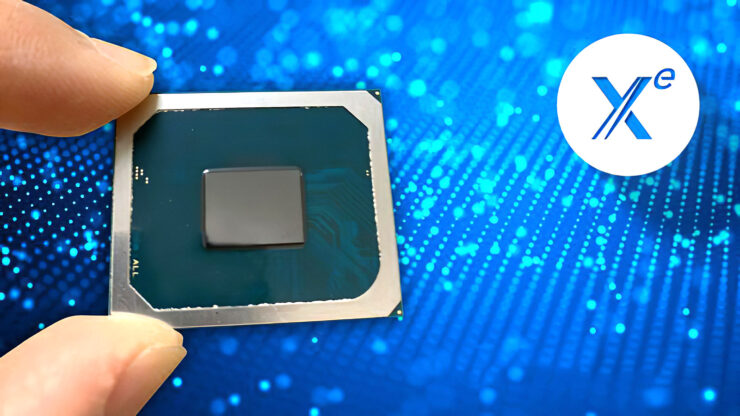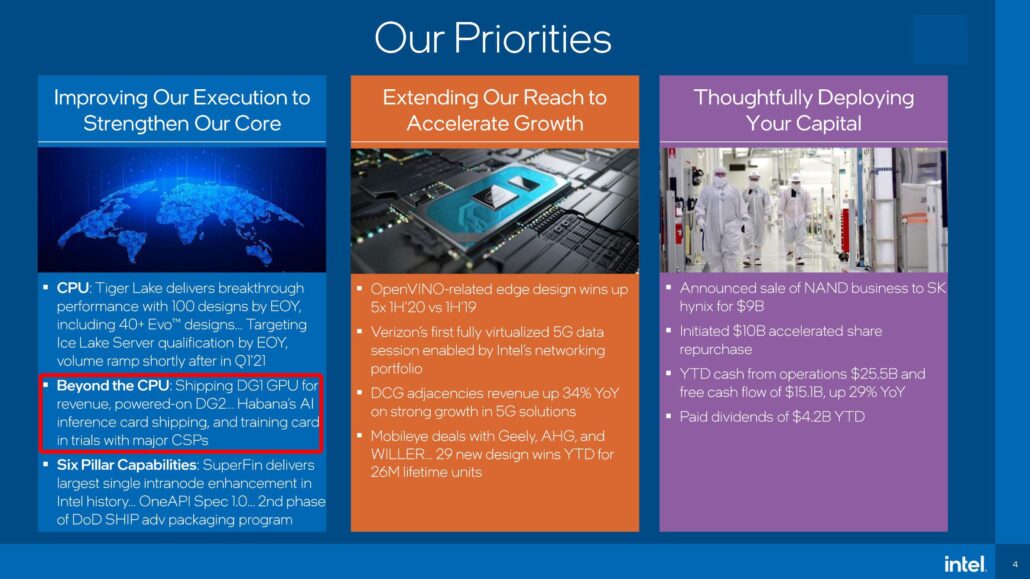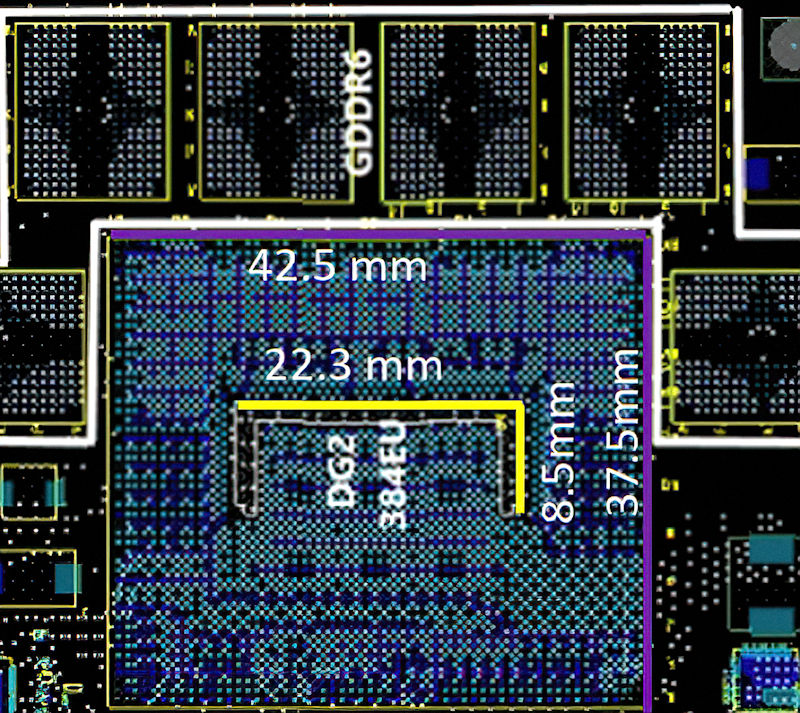
A very interesting detail was hidden away in Intel’s most recent quarterly earnings: the company has successfully started shipping its first discrete GPU (the DG1) in volume. This is an incredible milestone for the company to achieve and lays to waste any claims of Xe going down the road of Larrabee. Not only that but the company revealed that the DG2 GPU, based on Intel Xe HPG architecture, has already taped out and has been powered on in labs – so it won’t be that far away either.
Intel shipping first discrete GPU ‘DG1’ in volume, DG2 based on Xe HPG taped out and powered on
There were rumors circulating that Intel’s discrete GPU program was canned and DG1 would never be coming out in a discrete GPU format. Intel has not only crushed that rumor but announced that it is already shipping DG1 in volume. We also know of at least two major design wins for the DG1 already – which is great news for any GPU enthusiast. The GPU industry has had two players for a very long time and it looks like it is officially a triopoly.

The sneaky announcement was hidden in a slide in the investor presentation and confirmed DG1 shipping in volume and DG2 on its way. Intel also clarified that DG2 not just be a successor to DG1 and based on Xe LP architecture but will be a much powerful GPU featuring the Xe HPG architecture. This is not surprising considering DG1 was always supposed to be training wheels for the company before they truly start scaling up its efforts. Since Xe HPG will be manufactured on TSMC’s process – it will not be bogged down or affected by the company’s own manufacturing woes.
Rumor: Intel Xe HPG GPU could get 960EUs with GDDR6 memory in 2021
According to a tweet by twitter user Raichu (which has still been deleted), Intel’s Xe HPG could have 960 EUs instead of the expected 512 EUs for the top-end model. This will increase the expected core count from 4096 to 7680 and also significantly increase the card’s expected TFLOP rating if true.

According to the leaker, Intel is currently evaluating a SKU with 960 EUs. Intel has previously confirmed that Xe HPG will have just one tile and the biggest tile we have seen had 512 EUs so that was the theoretical maximum that the company implied. If this rumor turns out to be true then it might be that Intel is deciding to change that decision and go with binned versions of a 2 tile concept (430 EUs each – which would indicate a binned die from Xe HP). This would obviously help them remain more relevant and competitive against offerings from NVIDIA and AMD.

Intel’s Xe HPG lineup is slated to arrive sometime in 2021 according to known twitter leaker @Mebiuw and the GPU is expected to have either 6GB or 8GB of GDDR6 for the first launch. At any rate, it is clear that for their first entry into the gaming segments, intel is going for a mainstream approach instead of an Ampere/Navi-slayer and would likely be targetting the price/perf sweet spot. Intel has the financial resources to subsidize their GPUs greatly and sell them to gamers cheap to establish market share and Xe HPG should be the perfect tool to do that.
Additional background on Intel’s Xe HPG
While Xe HP and HPC utilize HBM memory, Intel wants its HPG branding to be more budget-friendly since its targetted dead center at gamers. This is why the architecture is equipped with GDDR6 memory. Now while the company was very tight-lipped about the architecture they did confirm that the GPU will feature hardware dedicated ray-tracing support and will be coming sometime in 2021.
Probably the biggest reveal was the fact the graphics card will be made on an external process (likely TSMC) which would mean that it will not be tied down by any foundry delays that Intel may face. [opinion] Since its coming in 2021, I would guess that TSMC’s 7nm or 6nm process would start to be freed up by then with AMD etc transitioning to 5nm and that would become the most feasible process for this GPU. [/opinion]

In an attempt to get further details about Xe HPG, I asked Raja Koduri whether the GPU would be MCM based or single tile and while he did not answer the question directly, he told me to refer to the packaging details shown in their GPU cadence slides. See multi-tile GPUs like Xe HP require special EMIB and Co EMIB packaging and Xe HPG is listed as having a “Standard” package. This confirms that the GPU is going to ship with 1 tile of Xe HPG.
The scalability arch in the Xe HPG philosophy also indicates that the first GPU is a trial run for the company and if it works well, scaling it upwards should be trivial. Although the first Xe HPG GPU is starting with a single tile, if the response is good, then the company can easily scale to more tiles and exponentially increase the performance of their GPUs. What’s more, Intel is working on a unified driver stack (for example the drivers for Tiger Lake’s Xe GPU already work with DG1).